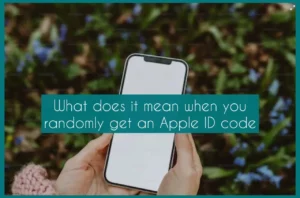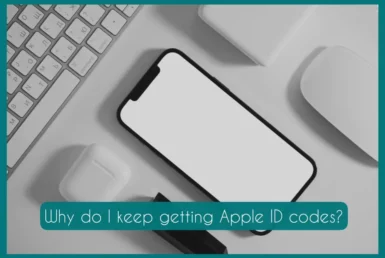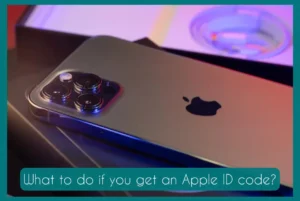Are you receiving Apple ID codes without requesting and wondering why this happens? As more people become confused by the frequent appearance of Apple ID verification codes, this question has grown in popularity.
Investigating the causes of this phenomenon reveals information on the safety measures Apple has made to protect your account, the possible causes of these codes, and the steps you can take to maintain the security of your digital identity. Explore this article to unravel what’s going on around the reoccurring Apple ID codes.
What Does It Mean when You Randomly Get an Apple ID Code?
A sudden receipt of a random Apple ID code could indicate an unauthorized attempt to log into your account. Apple’s security mechanism is activated when an unauthorized person tries to sign in to your Apple ID using a new device or browser.
To verify your identity and make sure you are the one trying to access the account, a verification code is provided in response to your request to a trusted device or phone number.

This two-factor authentication procedure adds a second layer of security, preventing unauthorized access and protecting your sensitive data from possible hacking.
What to Do If You Get an Apple ID Code When You Didn’t Request One
Receiving an unexpected Apple ID verification code raises concerns that your account may be being attempted to be accessed by someone else without your knowledge.
It’s critical to act immediately to protect your account and stop unauthorized access. Here is a step-by-step instruction on what to do in this circumstance.
1. Don’t Ignore It
If you ignore the verification code, your account may become exposed. Even though you didn’t make the request, take it seriously.
2. Review Your Own Activity
Check to see if you accidentally activated the code before drawing any conclusions. Examine whether you recently logged in to a new device or made any changes to your account that would have caused the code.
3. Change Your Password
If you’re certain you didn’t make the request and believe someone else may have accessed your Apple ID, change your password immediately. Select a strong password that is distinct from others and is made up of a mix of letters, numbers, and special characters.
4. Enable Two Factor Authentication.
If you haven’t previously, turn on 2FA for your Apple ID. 2FA requires a verification code as well as your password for account access, adding an additional degree of protection.
Without the verification code from your trusted device, even if someone manages to get their hands on your password, they won’t be able to access your account.
5. Contact Apple Support
If you think your account has been compromised, contact Apple customer service. They can help you with the steps you need to take to protect your account and stop any unauthorized access.
6. Examine Trusted Devices and Numbers
Verify the phone numbers and trusted device list connected to your Apple ID. Remove any that you don’t use or recognize anymore, as they might serve as points of entry for burglars.
7. Monitor Account Behaviour
Keep an eye out for any strange behaviour on your account. Apple offers tools for keeping track of recent account activity, allowing you to detect any odd login attempts or modifications.
8. Use Emails Carefully
Watch out for scams that involve phishing. Scammers may send fake emails asking for your verification code while pretending to be Apple’s help. Never send personal information or your verification code to anyone else through email.
9. Protect Your Devices
Ensure that all your devices have the most recent security updates and are password-protected.
By employing these techniques, you can deal with the situation if you get an Apple ID code without asking for one. Your account and personal information will be protected from potential attacks by taking immediate action and putting in place strong safety precautions.
Conclusion
The mystery behind unexpected Apple ID codes can be troubling in the digital era, where security is paramount. But, preventative efforts can lessen potential dangers.
The most important actions are promptly handling such incidents, confirming your activity, and strengthening your account with strong passwords and two-factor authentication. You can negotiate such circumstances with confidence and ensure the privacy of your Apple ID and personal data by remaining alert and knowledgeable.


